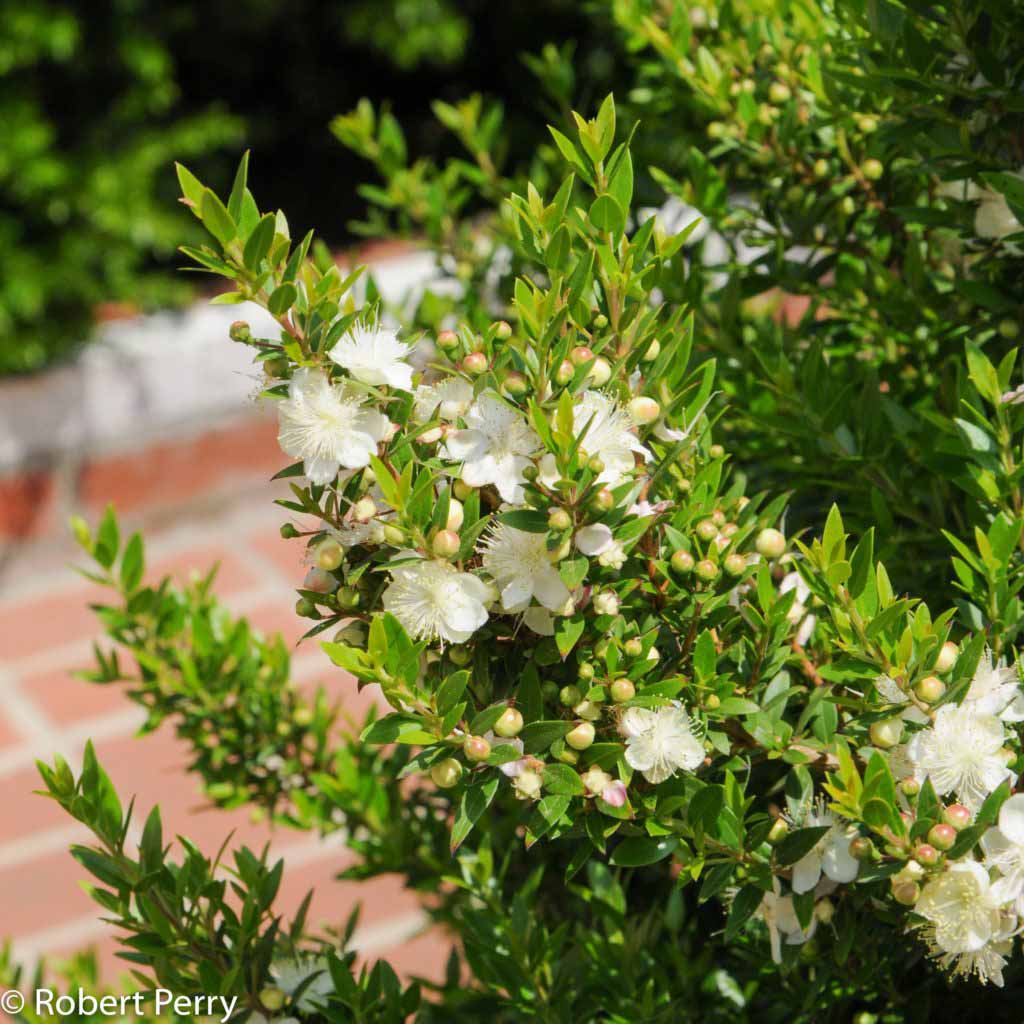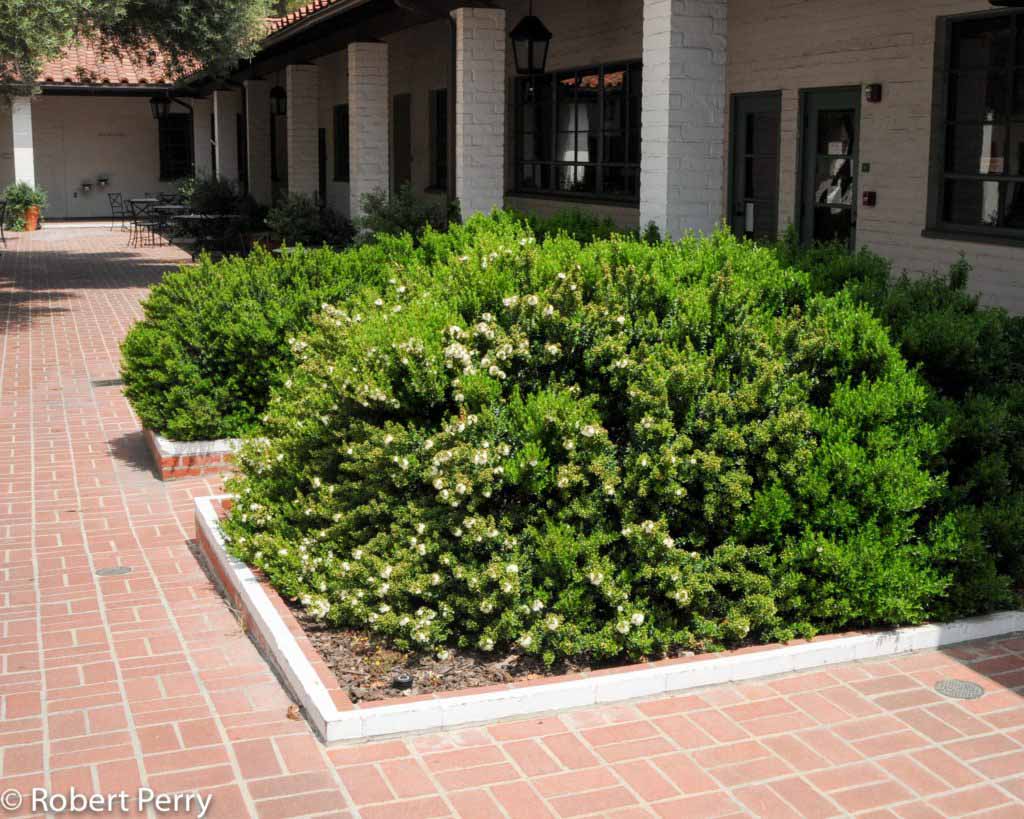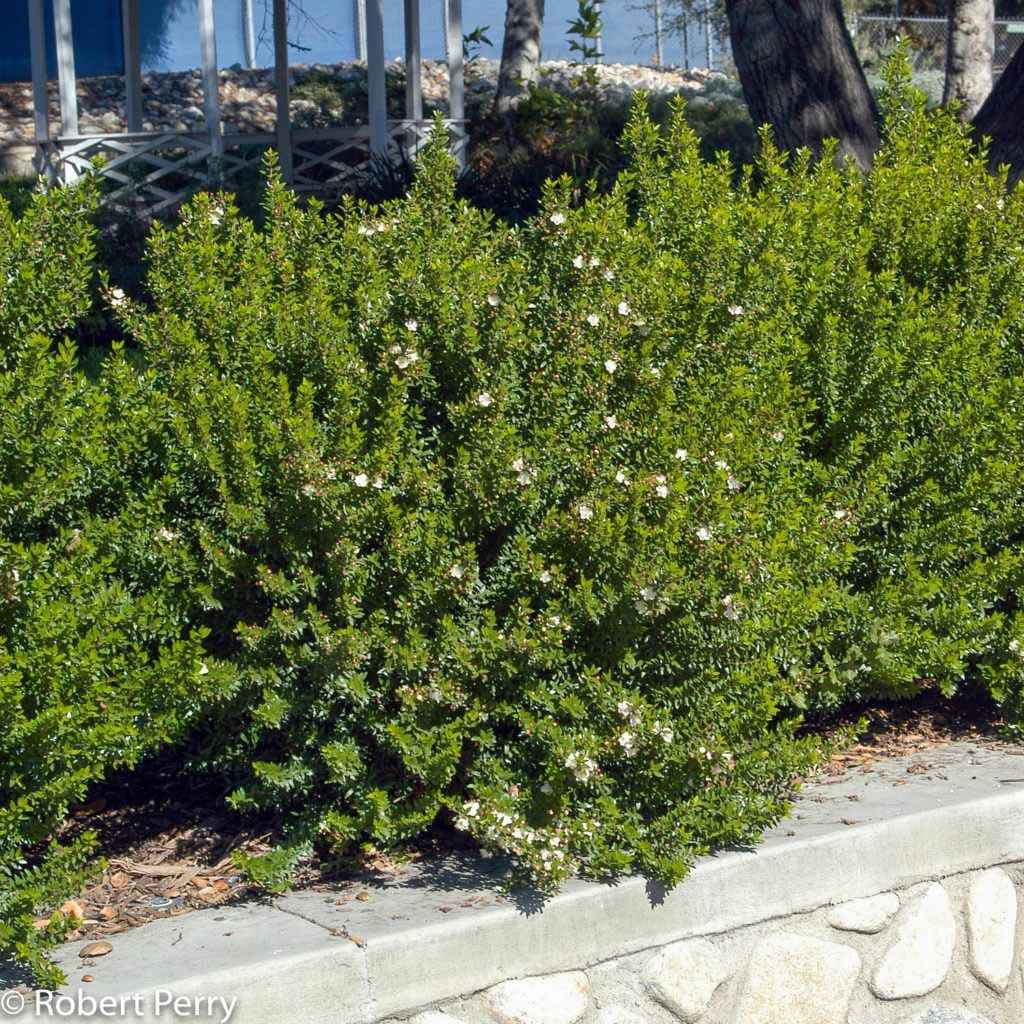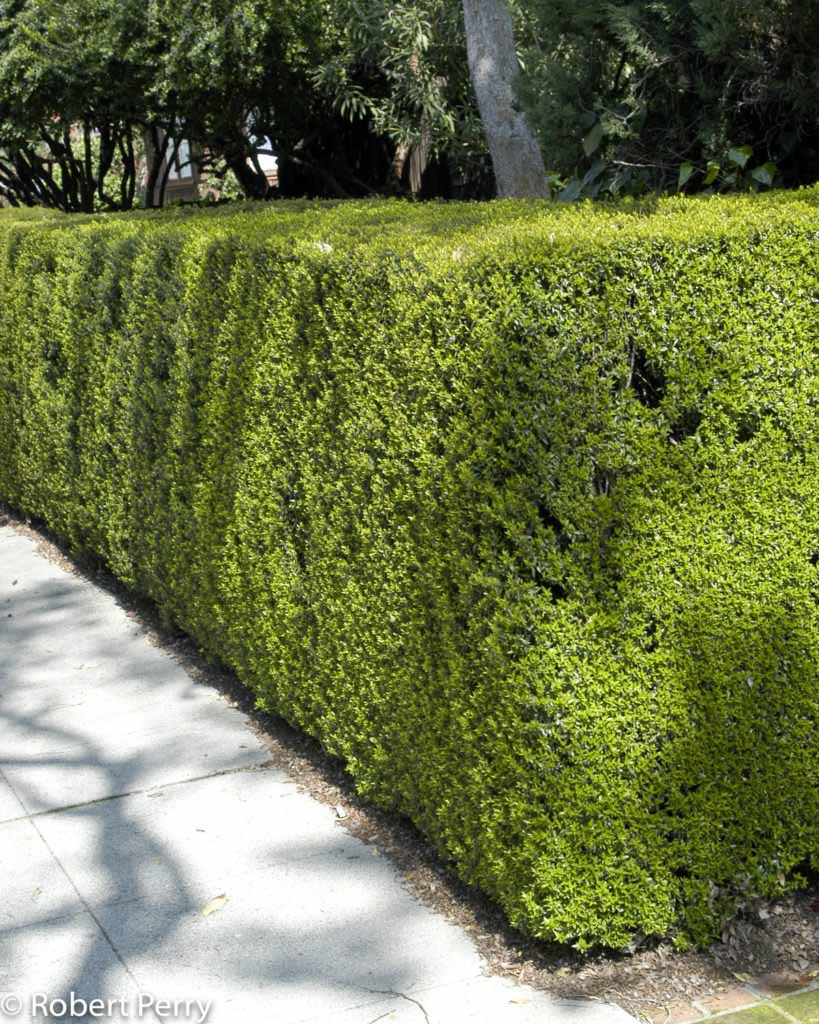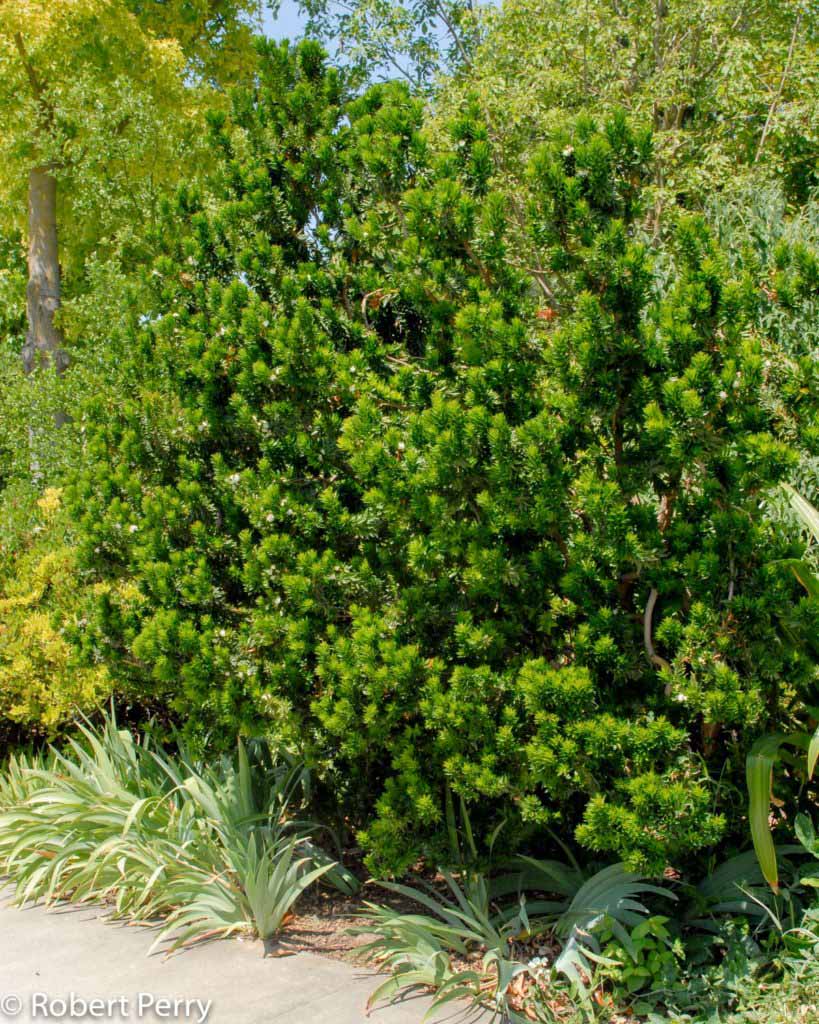Please note:
For most situations, we would not recommend installing this plant in new gardens, landscapes, or plantings in southern California.
Dwarf myrtle was long used in the region as a common plant for formally clipped hedges, which require massive amounts of work to maintain. We usually recommend considering a looser, less formal hedge using California native plants that will need to be pruned less often. For those purposes, depending on sun exposure, some of our top recommendations to consider instead of dwarf myrtle include lemonade berry, Centennial coyote brush, Eve Case coffeeberry, and creeping barberry.
This plant profile is included in this site as a reference for two primary reasons:
- If you already have this plant in your landscape, this information can be used to know how to care for it.
- If you already have this plant in your landscape, you can use this information to learn which of our recommended plants have the same recommended watering needs, making them potential choices for grouping together if you will be adding new plants to the existing area.
In general, instead of this plant, we recommend planting appropriate California native plants whenever possible.
In addition to their beauty, California native plants offer the most additional benefits beyond just low water use, including habitat for the birds, butterflies, and pollinators who evolved here with them. This adds value and beauty in your landscape beyond just a pretty plant, allowing the landscape to actively contribute to the environment instead of just using less water. You can find our top recommended native plant choices on our Plant Finder by selecting “California Native” and learn more about California native plants here.
To learn what exactly California native plants are and how they are different from other low water plants, visit this link.
For visual interest or other reasons, some people may also want to mix in other non-native low-water demanding plant choices even though they do not have the same ecological value as native plants. For that reason, we feature a number of non-native waterwise selections on this site as well. However, we see native plants as the best “go to” for most landscape or garden choices! We encourage people to consider planting at least 50% of their landscape to native plants. See our Garden Designs section or visit our Waterwise Demonstration Garden in Montclair for plenty of inspiration.
————————————————————————————————————————————————
The dwarf myrtle slowly grows into a medium size evergreen shrub up to 5-8 ft. high and as wide. It is one of the most popular and well adapted plants for clipped hedge and topiary uses. Foliage is comprised of 1-2 in. long pointed leaves that are bright glossy green and have a spicy fragrance when clipped or crushed. Noticeable clusters of small white flowers are pleasantly fragrant and occur in spring; these are often removed when plants are sheared.
Myrtle is native to Europe where it occurs in coastal and inland habitats around the Mediterranean region. It has been cultivated in gardens for centuries for scented oils contained within its foliage, flowers and bark. These oils are widely used in the production of perfumes. In Southern California, this plant has shown wide adaptability to a variety of soil types, including calcareous. The best foliage character is maintained with regular moisture, particular when grown as a hedge. Older plants can be pruned to reveal twisting trunks that have an interesting bark character for specimen value in raised planters.
